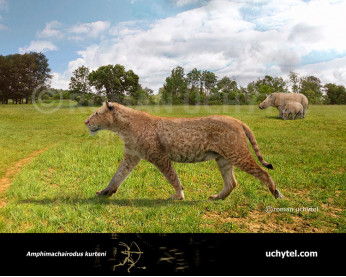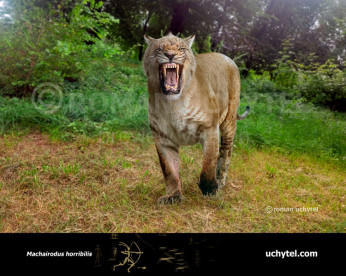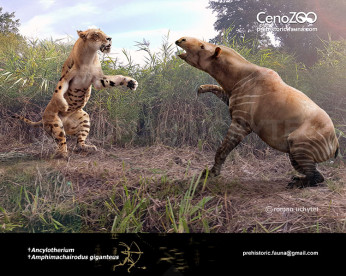Amphimachairodus giganteus
162162Amphimachairodus giganteus (Machairodus giganteus Wagner, 1848)
Order: Хищные (Carnivora)
Family: Felidae
Subfamily: †Machairodontinae
Tribe: †Machairodontini
Genus: †Machairodus
Temporal range: Middle Miocene - Pleistocene (Europe, Asia)
Size: The largest Machairodus was around 2.5 meters long, 1.3 meters tall at the shoulder. Weight estimated at up to 320 kg.
Amphimachairodus giganteus, the largest species known within the genus Machairodus, was a large lion-sized saber-toothed cat with elongated upper canines and cheek teeth efficiently adapted for slicing meat. The animal is known mostly from a variety of fragmentary fossils found through Europe and Asia, with the best-preserved skulls coming from China. Social behavior is also indeterminable but may have paralleled that in modern feline species. Machairodus giganteus is associated with faunas typical of an open plain environment and may have had a life-style similar to that of a modern lion. Machairodus giganteus could have hunted in large packs or in small groups, maybe mating pairs. Large packs would have been beneficial in bringing down the large prey but would have meant more mouths to feed requiring more time pursuing prey. The array of prey animals available varied in size from creatures larger than buffalo such as large giraffids to medium-sized fast-running antelope. Cooperative hunting would have been more advantageous in capturing both large and small prey, using more muscle to take down the large prey and possibly using more successful ambush tactics for the small prey.
Igor Kazanov
Amphimachairodus giganteus (Machairodus giganteus Wagner, 1848)
Order: Хищные (Carnivora)
Family: Felidae
Subfamily: †Machairodontinae
Tribe: †Machairodontini
Genus: †Machairodus
Temporal range: Middle Miocene - Pleistocene (Europe, Asia)
Size: The largest Machairodus was around 2.5 meters long, 1.3 meters tall at the shoulder. Weight estimated at up to 320 kg.
Amphimachairodus giganteus, the largest species known within the genus Machairodus, was a large lion-sized saber-toothed cat with elongated upper canines and cheek teeth efficiently adapted for slicing meat. The animal is known mostly from a variety of fragmentary fossils found through Europe and Asia, with the best-preserved skulls coming from China. Social behavior is also indeterminable but may have paralleled that in modern feline species. Machairodus giganteus is associated with faunas typical of an open plain environment and may have had a life-style similar to that of a modern lion. Machairodus giganteus could have hunted in large packs or in small groups, maybe mating pairs. Large packs would have been beneficial in bringing down the large prey but would have meant more mouths to feed requiring more time pursuing prey. The array of prey animals available varied in size from creatures larger than buffalo such as large giraffids to medium-sized fast-running antelope. Cooperative hunting would have been more advantageous in capturing both large and small prey, using more muscle to take down the large prey and possibly using more successful ambush tactics for the small prey.
Igor Kazanov

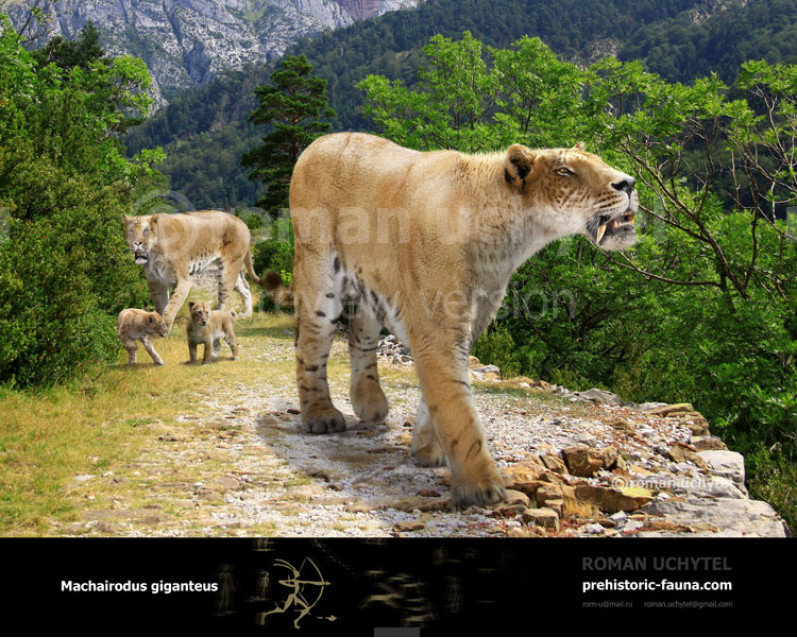
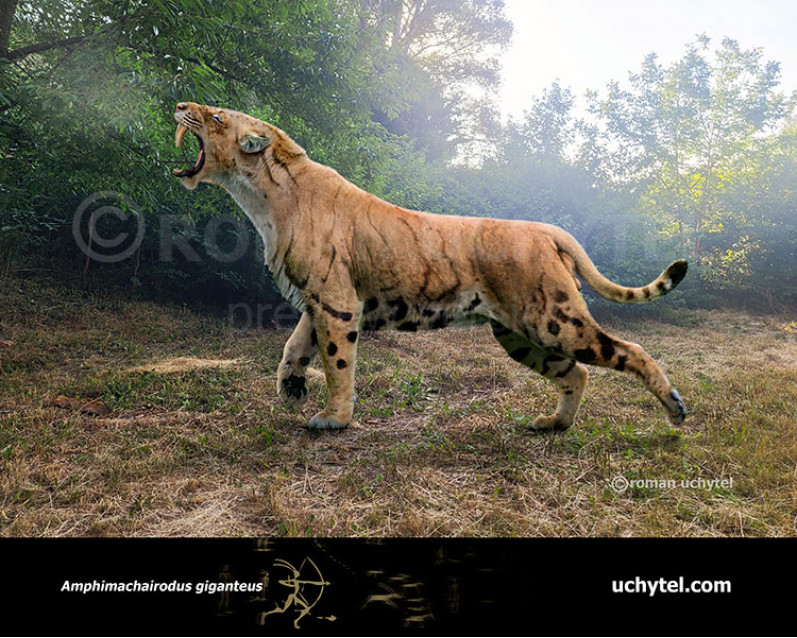
-797x638.jpg)
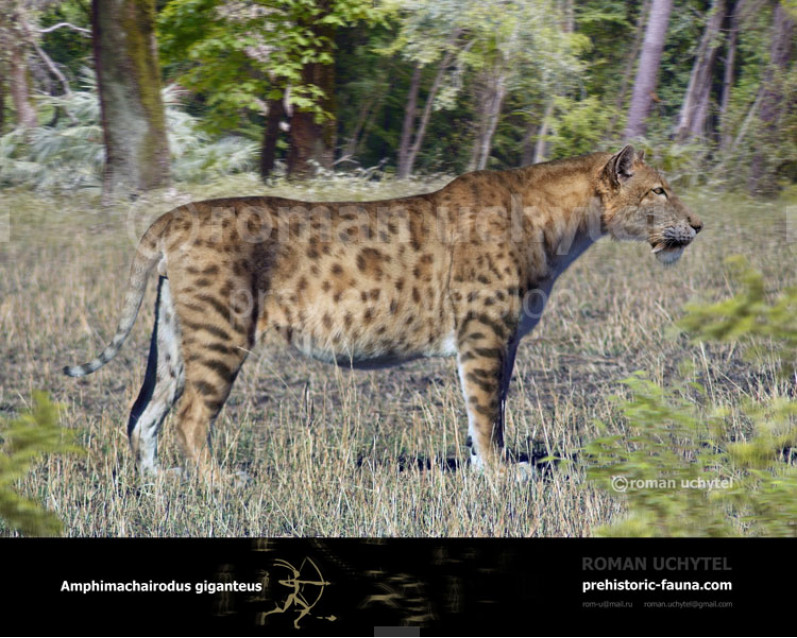
2-797x638.jpg)


-70x56.jpg)

2-70x56.jpg)
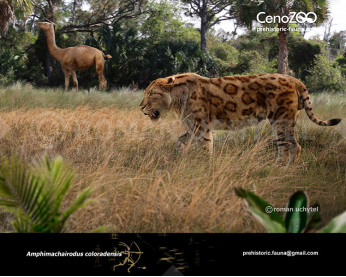
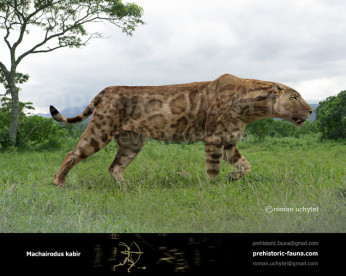
-346x277.jpg)
